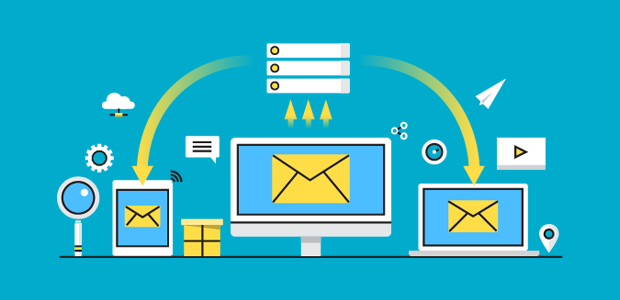The internet has an incredible amount of information on how to get subscribers, but not so much on what to send those subscribers. As a result, HubSpot has released a new study that looks at where email subscriptions fit into the bigger Inbound communication story, and what success with subscriptions really looks like.
Email Subscription Survey Background
In late 2018, the product team at HubSpot began investigating its email subscription usage data and the big data in HubSpots’ email product to examine what subscription types are used for and their impact on communication for HubSpot customers.
The study involved pulling aggregate data from 26,000 HubSpot accounts that sent subscription emails to customers between October 2017 and October 2018.
The purpose? To find a correlation between email subscriptions usage and email performance to see if there are any best practices to recommend.
The Results
From the study, HubSpot found that email performance is more or less the same across customer accounts when it comes to open rates - when examining customers by size, HubSpot found that larger customers perform the worst (by a small margin). HubSpot also found that the more subscription types a customer has, the more emails they send - with HubSpot concluding that subscription types on their own don't lead to success with email.
However, HubSpot did conclude that instituting feedback mechanisms for contacts to manage their subscriptions and communications more effectively may improve overall customer contact relationships.
A deeper look at the results of HubSpot’s study:
First HubSpot looked at subscriptions usage on its own, then in conjunction with emails, and lastly it dug deeper into email usage and sending habits. Here’s what HubSpot found from its study:
Subscriptions Usage
In analyzing subscription usage (the number of subscriptions created by a customer), HubSpot found a breakdown by portal, with the mode at 3 and the mean at 4.42, and the bulk of portals fall around 3-5 subscription types. Relatively few customers have more than 10 active subscription types.
The next question HubSpot looked at was: ‘Of the subscriptions that our customers are making, what types of subscriptions are they actually creating?’
By pulling the name of every active subscription type across the portals it analyzed in the study, HubSpot was able to pull together a breakdown of common words. As expected the top two are:
- Marketing Information Subscriptions
- Blog Subscriptions
- One:One Subscriptions
Other common subscription names are:
- Event Subscriptions
- News Subscriptions
- General Update Subscriptions
Slightly less common names were:
- Product information Subscriptions
- Offers Subscriptions
- Resource Subscriptions
What does this mean, exactly?
Companies, beyond the standard two (most common) words are sending emails in regards to events and industry news, with a smaller number sending emails about offers.
HubSpot says these results are expected: “There aren’t many types of email that a company would send beyond the basics, though at a higher level these six buckets make sense as a benchmark,” it commented in the study.
Subscription Email Open rates
When looking at open rates, HubSpot actually found they dropped once you get past 5 subscription types.
Overall though open rate hovers around 20%-30% whether or not you have 2 subscription types or 10.
By portal tier
The above findings are slightly skewed since HubSpot’s Enterprise portal emails are very different to Basic HubSpot portal emails, therefore HubSpot decided to look at the same metrics while taking pricing tier into account.
Open rate
Between the marketing tiers, it was found that Basic HubSpot portals have the highest open rates whereas Enterprise portals have the lowest.
HubSpot said this was both surprising and unsurprising. “We know that Enterprise portals users are more sophisticated with their Inbound Marketing but also with more contacts comes broader mass communication and difficulty in targeting.”
Send by number of subscriptions
When the study examined 'sends' by the number of subscription types there was a pretty clear correlation - more subscription types mean more emails.
However, is it that more subscription types are the cause for poor performance? Or rather, do more subscription types lead to heavy email usage? When normalizing the data by the number of contacts in a portal, HubSpot was able to find that as the number of subscriptions increases, there is an increase in sends per contact as well.
When it comes to portals sending the most email per contact, HubSpot found that Enterprise portals lead with 13 emails per contact, Professional portals following with 8 and Basic portals just behind with 7.
Conclusion
It could be that the key to HubSpot email subscriptions is not simply to provide customers with a method of communications control to ensure they do not annoy their customers, but instead to provide contacts with the power and means to say exactly how, when, and how frequently they want to be communicated with.
As a result of the study, HubSpot said it will come out with a series of guides and posts to encourage best practices in email communications so its customers have an easy and approachable resource to aid their marketing efforts. We will share this information with you when it becomes available.
Do you have any thoughts on the study or want to ask The Brit Agency a question about your email subscriptions communications strategy? Contact our team of experts today. We would be more than happy to answer any questions you have.

